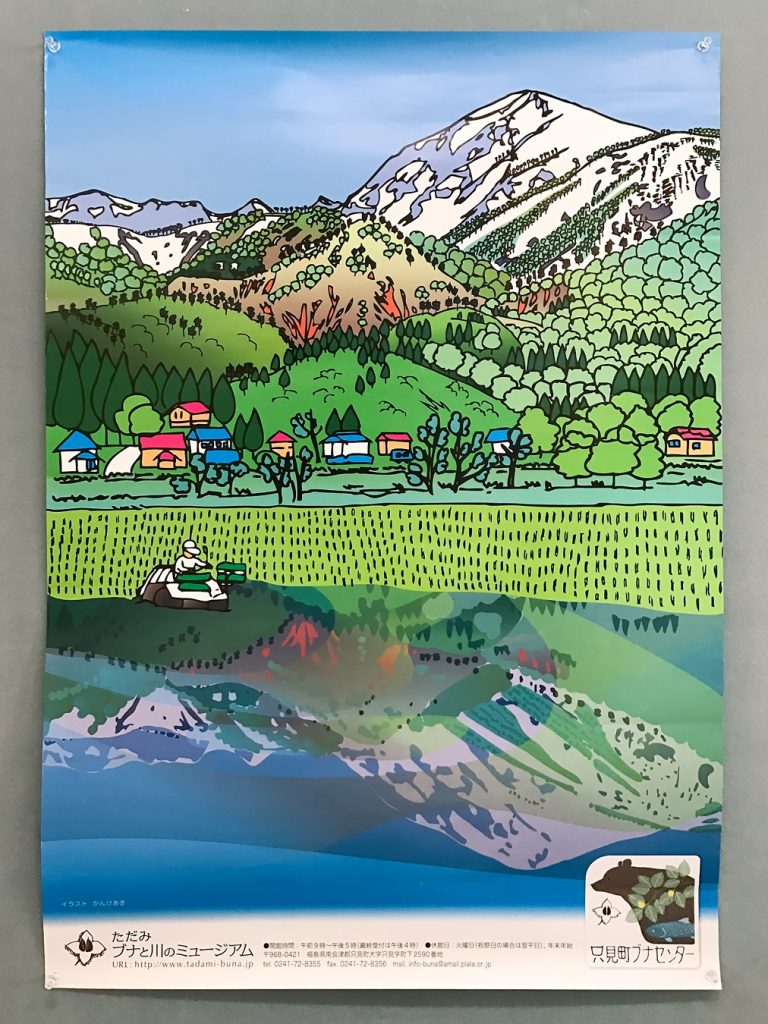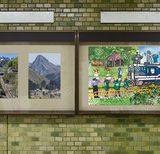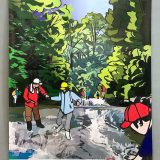只見町ブナセンターポスター用イラスト(春)雪食地形
The illustration is describing Tadami’s distinctive environment, “Nivation landform” and “mosaic vegetation” formed by heavy snow.
The mountains in deep-snow Tadami-town show avalanche chutes, which are a type of nivation landform. The mountain surface has been eroded by avalanches and has exposed the bedrock.
You can see glaciated mountains around the world but it is rare to have mountains like this one formed by snow. It is a Tadami river watershed feature that such nivation landform comes close to the populated area.
This landform creates unique vegetation. Kita-goyou (a type of pine) lines the mountain ridges, and deciduous tall trees such as Buna (Japanese beech) trees grow on moderate slopes. On the avalanche-affected steep slopes, fast-growing herbaceous plants are found as well as short trees which are relatively tolerant to avalanches.
In this season, which is before the short trees’ leaves grow, the contrast between the deep-green of the pines on the mountain ridge and the avalanche chutes is clearly shown.
Adding this contrast, you can also feel spring coming with the pink of the mountain cherry blossoms and the white of the kobushi, which is a type of a magnolia.
More info about the Tadami Beech Centre from the following links:
Buna centre or Japanese Beech tree centre is a local town information centre and museum focusing on research and environmental and cultural conservation work in the surrounding area, located in Tadami town, at the western end of Fukushima prefecture.
Tadami, Fukushima pref.
Located in a heavy snowfall region in the south-west of Fukushima prefecture on the border with Niigata prefecture. Declared「Shizen shuto・Tadami(Capital of Nature・Tadami)in 2007.
Its natural environment and resources together with the life and culture of its residents were judged particularly valuable among the modern world environment,
In 2014 it was designated as a biosphere reserve under the Man and the Biosphere Program. UNESCO’s Japan committee calls them Eco Parks.
 奥会津只見 イラスト美術館
奥会津只見 イラスト美術館 

